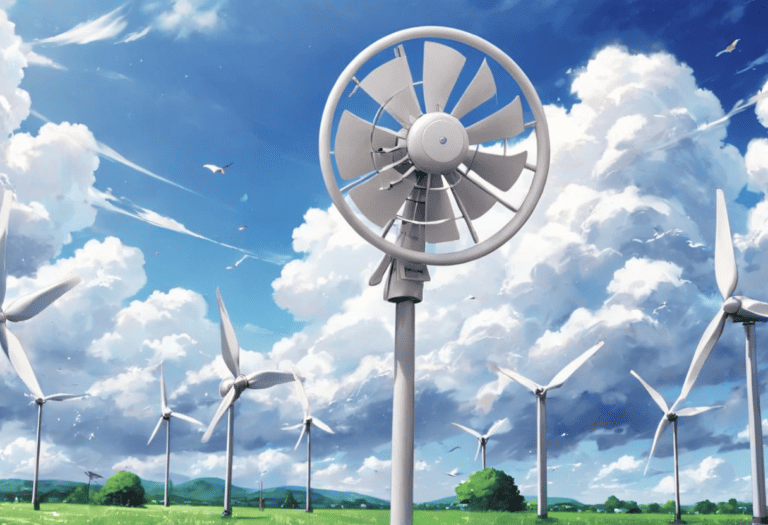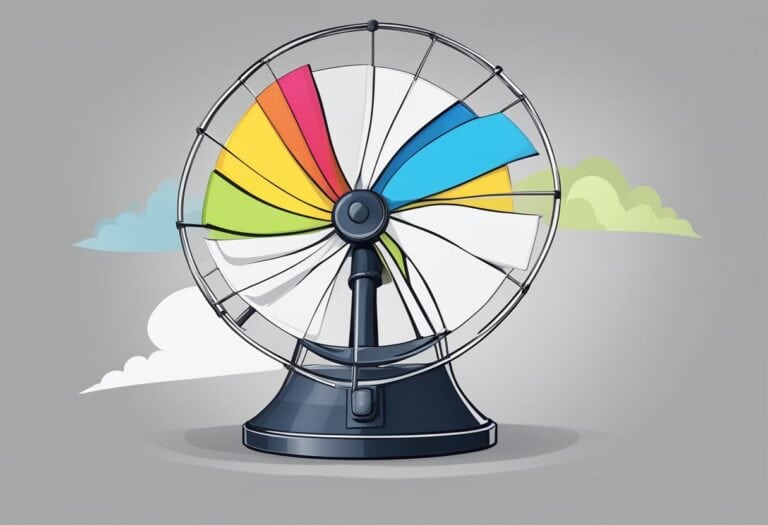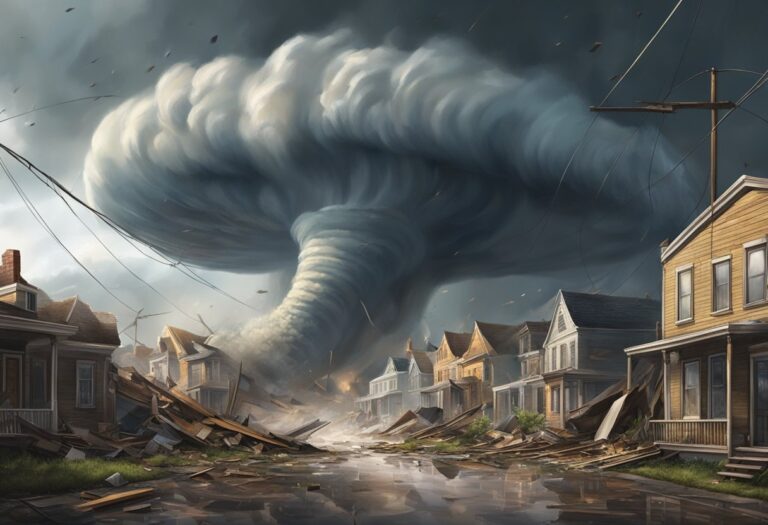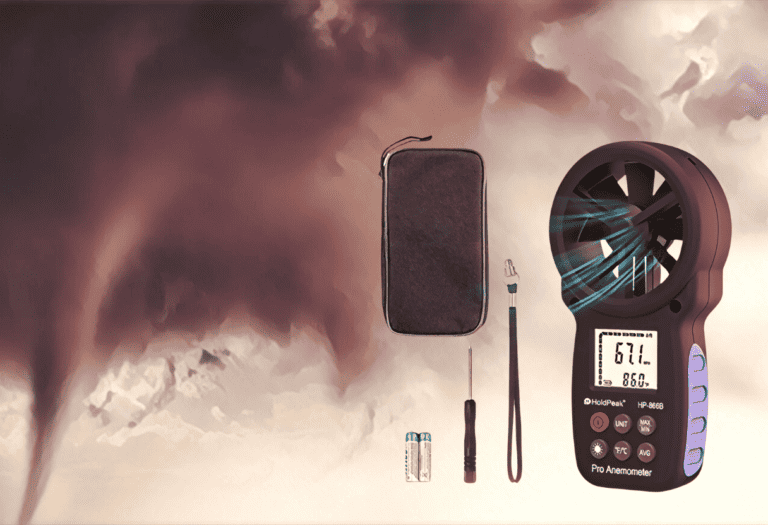Staying cool in hot weather is more than just a matter of comfort; it’s a crucial aspect of maintaining good health.
As temperatures rise, your body works hard to maintain a stable internal temperature. However, extreme heat can challenge your body’s ability to cope, leading to heat-related illnesses if proper precautions aren’t taken. Implementing strategies for hydration, finding shade, and dressing appropriately can help you manage the heat effectively.
As climate change intensifies, the occurrence of heatwaves is becoming more frequent and severe, making it imperative to understand how to stay cool in the heat. Simple actions, such as choosing lightweight and breathable clothing, staying hydrated with water or electrolyte-rich drinks, and modifying your diet to include lighter meals, play a vital role in regulating your body temperature.
Moreover, planning your physical activities to avoid the hottest parts of the day and being aware of your local weather forecast can also contribute to your safety during periods of extreme heat.
Staying cool in hot weather is crucial for health and comfort. Effective strategies include staying hydrated, wearing lightweight clothing, seeking shade, and adjusting activities to cooler times. Utilizing fans, air conditioning, and cool baths can also help regulate body temperature, reducing the risk of heat-related illnesses.
Understanding Heat and Health
In hot weather, your body works hard to maintain a normal core temperature, but excessive heat can overwhelm your body’s defenses. Understanding how heat impacts health and the risk factors for heat-related illnesses is crucial for staying safe during heatwaves.
Effects of Heat on The Body
When exposed to high temperatures, your body attempts to cool itself mainly through sweating. However, heat stress can occur if your body cannot dissipate heat effectively. This can lead to a range of heat-related illnesses, such as:
- Heat Cramps: Painful muscle spasms, usually in the legs or abdomen, associated with intense exercise and sweating in high temperatures.
- Heat Exhaustion: A precursor to heatstroke, characterized by dehydration, fatigue, clammy skin, and dizziness. It’s essential to treat heat exhaustion promptly to prevent progression to heatstroke.
- Heat Stroke: A severe condition occurring when your body’s temperature rises above 104°F (40°C) and body’s heat-regulating systems fail, leading to possible organ damage or even death if not treated immediately.
High humidity can exacerbate these effects, as it hinders sweat evaporation, a critical process for cooling the skin.
Risk Factors for Heat-Related Illnesses
Certain factors increase the risk of developing heat-related illnesses, including:
- Age: The very young and elderly are more vulnerable to heat due to less efficient regulation of body temperature and, in some cases, poor circulation.
- Dehydration: A decrease in your body’s water levels impairs heat dissipation and increases your core temperature.
- Chronic Health Conditions: Individuals with heart disease, mental illness, or other chronic health conditions may have impaired responses to heat.
- Medications: Some medications can affect your body’s ability to stay hydrated and respond to heat.
- Environmental Factors: Lack of airflow, high heat indices, and urban heat islands can increase the risk of heat illness, especially during prolonged heatwaves.
By recognizing these effects and risk factors, you’re better prepared to take proactive measures to minimize your risk of heat-related health issues. Stay hydrated, take breaks in the shade or air-conditioned environments, and know the signs of heat-related illnesses to protect yourself and others during hot weather.
Hydration Strategies
Staying hydrated is crucial in hot weather to avoid dehydration and maintain your hydration level. It’s not just about drinking more water; it’s about how and what you drink.
Water Intake Recommendations
Your water intake should be sufficient to compensate for the increased loss of fluids through sweat in hot weather. Drink at least 8-10 glasses of water per day, and if you’re active, increase this amount. Drinking cold water can help cool down your body temperature but be careful not to consume it too quickly, as it can lead to stomach cramps.
- Adults: 2.7 to 3.7 liters (women/men)
- Active individuals: Additional 1.5 to 2.5 cups for short exercises
- Intense or long-duration activities: Keep replenishing as needed
Balancing Electrolytes
While water is key, maintaining electrolyte balance is equally important to prevent cramps and heat-related issues. Electrolytes — key minerals like sodium, potassium, and magnesium — are lost through sweat.
- Sports drinks: Can replenish electrolytes during long-duration activities.
- Coconut water, milk, or hydrating fruits and vegetables: Natural alternatives for balance.
- Salty snacks: In moderation, can help retain fluids and maintain electrolyte levels.
Remember to listen to your body and hydrate before you feel thirsty, as thirst is a sign you’re already on the way to dehydration.
Appropriate Clothing Choices

Choosing the right clothing can significantly impact your comfort levels in hot weather. Opt for materials and designs that enhance the evaporation of sweat and provide good air circulation around your body.
Fabrics and Fits for Hot Weather
When it comes to fabrics, natural materials like cotton and linen are among the best choices for hot weather attire. These fabrics are known for their breathability and their ability to wick moisture away from the skin. Selecting loose-fitting clothing also plays a critical role in heat management. Clothes that don’t cling to your body allow air to flow and help you stay cool. Here’s a quick guide to help you choose:
- Fabrics:
- Cotton – Absorbs perspiration and allows it to evaporate.
- Linen – Lightweight and loosely woven, which increases airflow.
- Fits:
- Loose Fit – Promotes air circulation.
- Relaxed Cut – Avoids trapping heat.
The Importance of Hats and Sunglasses
In intense sunlight, a wide-brimmed hat can provide much-needed shade and protect your face and neck from sunburn. Hats made of materials like straw or again, lightweight cotton, can offer both sun protection and ventilation.
Sunglasses serve not only as a fashion statement but also shield your eyes from UV rays which can be harmful. When selecting sunglasses, look for ones that block out both UVA and UVB rays to ensure maximum protection.
Sun Protection Methods
Defending your skin against the sun’s ultraviolet (UV) rays is crucial to prevent sunburn and reduce the risk of skin cancer. Here’s how you can protect yourself effectively.
Sunscreen and SPF
When selecting a sunscreen, choose a broad-spectrum product that shields you from both UVA and UVB rays. The Sun Protection Factor (SPF) indicates the level of protection; the higher the SPF, the more protection it offers. Apply sunscreen liberally at least 15 minutes before sun exposure and reapply every two hours, or more frequently if you’re swimming or sweating. Sunburn can occur within 15 minutes of sun exposure, so don’t delay in applying sunscreen.
Finding and Creating Shade
Seeking shade, especially during the sun’s peak hours between 10 a.m. and 4 p.m., helps you avoid direct sun exposure. If natural shade from trees or other structures is not available, consider creating your own with items such as umbrellas or canopies. Wearing protective clothing, hats, and sun protection accessories also augments your shade-based defenses, providing an additional barrier between your skin and UV rays. Remember, even on cloudy days or in cooler weather, UV rays can still cause damage, so it’s important to remain vigilant about sun protection.
Temperature Regulation Techniques
In extreme heat, it’s crucial to manage your body temperature to maintain comfort and health. Utilizing water for cooling and adapting your surroundings will effectively reduce heat stress.
Cooling Down with Water
Staying hydrated is fundamental in hot weather, as it aids in maintaining normal body temperature. Sipping on cool water throughout the day is a simple yet effective method to stay cool. Incorporate showers and baths with cooler water to lower your body temperature. If possible, spending time in a pool can also be a refreshing way to beat the heat.
- Drink Water: Aim for 8-10 glasses daily.
- Cool Showers/Baths: Take at least one cool shower/bath per day.
- Use a Pool: Immerse in cool water when available.
Adjusting Environments for Comfort
Controlling the climate in your living space is key. Using fans or an electric fan can create airflow and promote sweat evaporation, which cools the body. If humidity is high and fans are less effective, employing air conditioning can provide significant relief.
- Fans: Enhance air circulation in your home.
- Air Conditioning: Set a comfortable temperature to reduce ambient heat.
Dietary Adjustments for Heat
As temperatures climb, your diet can play a pivotal role in helping you stay cool. Proper food and beverage choices may enhance your body’s ability to regulate temperature.
Foods to Consume and Avoid
Foods to Consume:
- Fruits: Opt for water-rich fruits like watermelon, strawberries, and peaches, which assist in hydration.
- Vegetables: Incorporate salads and leafy greens such as spinach and kale to keep meals light and cooling.
- Light Proteins: Choose lean meats or plant-based proteins, which are easier to digest, reducing extra metabolic heat.
Foods to Avoid:
- High-Sugar Foods: Minimize intake of sugary snacks and desserts. Elevated blood sugar can spike metabolic heat.
- Alcohol: Alcohol can lead to dehydration; limit consumption during hot weather.
- Caffeinated Beverages: Coffee and other caffeinated drinks may contribute to fluid loss.
Hydrating Through Meals
- Soups: Cold soups, like gazpacho, offer fluids and electrolytes, aiding in hydration.
- Salads: They can be a hydrating base for your meals, made from fresh, water-dense vegetables.
- Limit Heavy Foods: Heavy, rich meals require more energy to digest, increasing body heat. Opt for lighter meal options when possible.
Physical Activity in the Heat
Engaging in physical activities in hot weather requires precautions to maintain your health and safety. Careful planning and awareness of overheating signs minimize risks such as muscle cramps, headaches, and nausea.
Smart Exercise Practices
Choose the Timing Wisely: Aim to perform your workouts during the cooler parts of the day—early morning or late evening. If that’s not possible, opting for shaded locations can provide relief.
Dress Appropriately: Wear light-colored, loose-fitting clothing that allows your skin to breathe and sweat to evaporate. Fabrics with moisture-wicking properties are particularly effective.
Stay Hydrated: Drink plenty of water to replace fluids lost through sweating. Don’t wait until you feel thirsty—hydrate before, during, and after exercise.
Exercise Intensity: If the heat is intense, reduce the intensity and duration of your exercise. Focus on low to moderate activities like walking or swimming. Avoid strenuous exercise to prevent overheating.
Acclimatize: Gradually increase your workout intensity over 1-2 weeks to help your body adapt to the heat.
Recognizing the Signs of Overheating
Know Your Body’s Cues: Pay attention to how you feel during exercise. If you experience fatigue, muscle cramps, or headaches, these could be the first signs of heat-related illness.
Respond Quickly: At the onset of symptoms such as nausea or lightheadedness, it’s crucial to stop exercising immediately, find a cool place, drink water, and cool down your body.
Being informed and cautious can help ensure that your exercise routine in hot weather is both safe and enjoyable, without putting you at risk of overheating.
Cultural and Environmental Considerations
When facing hot weather, your cultural background and the local environment significantly influence the methods you use to stay cool. Recognizing cultural habits and environmental factors is crucial in developing effective cooling strategies.
Local Weather Patterns and Heat Preparation
Each region has its own weather patterns that can impact how you experience and combat heat. In places like Texas, where heat domes—masses of hot air trapped in the atmosphere—occur, understanding local climate trends is vital. You must be aware of heat advisories and plan accordingly by preparing cooling strategies such as staying hydrated and leveraging shade from trees to mitigate heat absorption.
- Heatwave Preparation:
- Stay Informed: Check local forecasts.
- Plan Ahead: Ensure access to cooling spaces.
- Adapt: Adjust your schedule to cooler hours.
Community and Cultural Practices for Staying Cool
Cultural practices play an essential role in keeping cool. Some communities emphasize staying indoors during the peak heat hours, while others partake in siestas to avoid the midday sun. In addition to cultural habits, community engagement, such as planting trees, can create a cooler local environment. Shared spaces like malls often serve as cool retreats and reflect the collective efforts to provide respite from the heat.
- Cultural Cooling Techniques:
- Daily Routines: Align activities with cooler times.
- Community Engagement: Participate in tree-planting initiatives.
By understanding both local weather patterns and community and cultural practices, you can better navigate and prepare for hot weather conditions in your area, helping to maintain comfort and safety during periods of extreme heat.
Safety Measures and Emergency Preparedness
When temperatures soar, taking proactive safety measures and preparing for emergencies can mitigate the risk of heat-related illnesses and even prevent deaths. Your awareness and response can make a significant difference.
Planning for Heatwaves and Power Outages
Heatwaves: A heatwave is a prolonged period of excessively hot weather, which may be accompanied by high humidity. The Centers for Disease Control and Prevention (CDC) advises you to create a Heatwave Preparedness Plan to protect yourself. This should include:
- Staying Informed: Monitor local weather forecasts to know when a heatwave is predicted. Establish a communication plan to receive alerts.
- Hydration: Keep a sufficient supply of water to stay hydrated during heatwave conditions.
- Cooling Centers: Identify local cooling centers or public places with air conditioning where you can seek relief.
Power Outages: Extreme heat events can lead to power outages, which may disrupt air conditioning, a critical resource to stay cool. Here’s what you can do:
- Backup Power: Invest in alternative power sources such as generators or battery-powered fans.
- Insulation: Ensure your home is well-insulated to retain cool air longer during a power outage.
- Emergency Kit: Develop an emergency kit with non-perishable foods, water, a first aid kit, and flashlights.
Emergency Response to Heat-Related Conditions
Heat-Related Illnesses: During a heatwave, you should know the signs of heat-related illnesses, such as heat stroke, which is a medical emergency. The World Health Organization (WHO) and CDC provide guidelines on recognizing these conditions:
- Heat Exhaustion: Symptoms include heavy sweating, weakness, and cold, pale, clammy skin. Move to a cooler location, lie down, and loosen clothing.
- Heat Stroke: Signs are high body temperature, hot, red, dry, or moist skin, and possible unconsciousness. This is a severe medical emergency; call 911 immediately and take steps to cool down until help arrives.
Prevention: Prevention includes wearing lightweight clothing, staying hydrated with water, avoiding strenuous activities during the heat of the day, and never leaving children or pets in a parked car.
By planning ahead and knowing how to respond to heat-related emergencies, you can stay safe even during severe heat events.
Frequently Asked Questions
This section provides clear answers to common questions about staying cool and safe during hot weather conditions.
What are effective strategies for cooling down during a heatwave without an air conditioner?
Use fans to circulate air and create a cross-breeze by opening multiple windows. Apply a cold cloth to your neck and wrists. For more extensive measures, consider creating a do-it-yourself evaporative cooler by hanging a wet sheet in front of an open window.
Can you suggest any products that help stay cool when it’s hot outside?
Wearing moisture-wicking clothing or using cooling towels can be effective. Additionally, portable hand-held fans and misting bottles are practical for on-the-go use.
What are the best ways to keep cool indoors during extreme heat?
Close blinds or curtains to block out the sun and insulate your windows with reflective materials or thermal blackout curtains. Use air conditioning if available, and consider placing bowls of ice in front of fans for an added cooling effect.
How do you manage to stay cool while working outside in high temperatures?
Stay hydrated by drinking water frequently. Wear a wide-brimmed hat and loose, breathable clothing to shield yourself from direct sunlight. Take regular breaks in shaded areas or a cool environment to prevent overheating.
What tips can you provide for sleeping comfortably in hot weather at night?
Use breathable linen or cotton bed sheets, and opt for a cooling gel pillow. Keep your bedroom ventilated and consider sleeping on the lowest level of your home where it’s often cooler.
How can one quickly reduce their body temperature when they feel overheated?
Drink cold water and move to a cooler place immediately. Apply ice packs or damp cloths to your pulse points, like the wrists, neck, and temples. Taking a cool shower or bath can also provide rapid relief from the heat.







